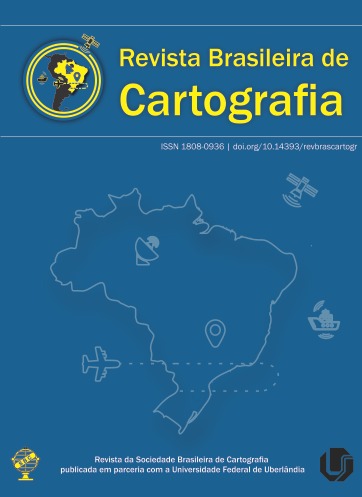Soil Moisture Estimation with GNSS Reflectometry: a Conceptual Review
Main Article Content
Abstract
Soil moisture monitoring enables efficient management and use of water resources, having great importance for several purposes, such as: monitoring of risk areas; delimitation of areas susceptible to flooding; geotechnical activities; and in agriculture development. GNSS Reflectometry (GNSS-R) is a scientific and technological development that allows one to perform proximal or remote sensing, depending on the antenna height concerning the surface, by means of navigation satellites. This method exploits GNSS signals indirectly reaching a receiver antenna after they are reflected on the surrounding surfaces. In this method, direct and indirect GNSS signals that reach the receiving antenna are exploited, after reflection on the surfaces existing around the antenna. The combination of these two signals causes the multipath effect, which affects GNSS observable and deteriorates positioning. On the other hand, when interacting with these reflecting surfaces one can estimate their properties. One of the main advantages of GNSS‑R, when compared with the conventional methods, is the intermediate coverage area, as well as, the use of the well-defined structure of GNSS systems that guarantee appropriate temporal resolution. The scope of this paper is to present a conceptual review of GNSS-R applied to soil moisture monitoring.
Downloads
Article Details
Section
Authors who publish in this journal agree to the following terms:
- Authors retain copyright and grant the journal right of first publication with the work simultaneously licensed under a Creative Commons Attribution License that allows others to share the work with an acknowledgment of the work's authorship and initial publication in this journal.
- Authors can enter into separate, additional contractual arrangements for the non-exclusive distribution of the journal's published version of the work (e.g., post it to an institutional repository or publish it in a book), with an acknowledgment of its initial publication in this journal.
- Authors are permitted and encouraged to post their work online (e.g., in institutional repositories or on their website) before and during the submission process, as it can lead to productive exchanges, as well as earlier and greater citation of published work (see "The Effect of Open Access").





